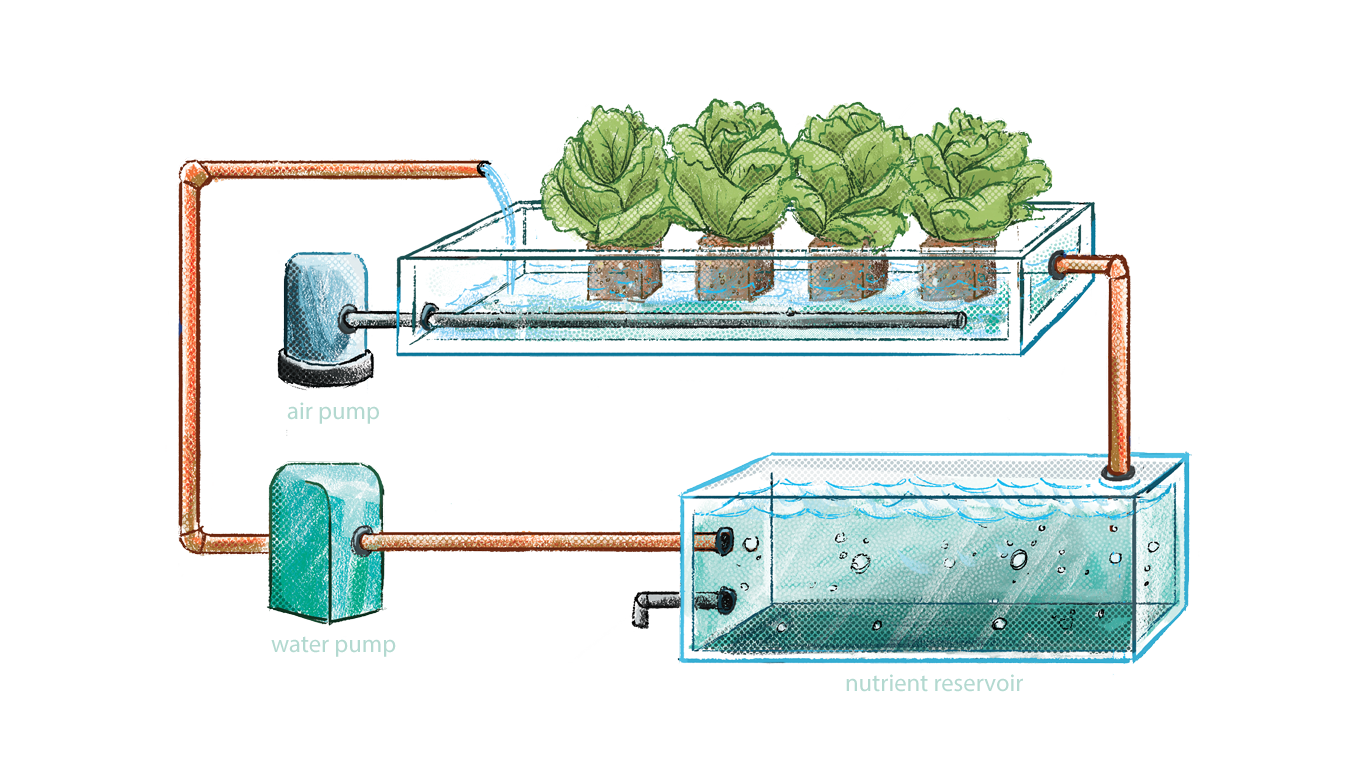Hydroponics

aquaponics
Hydroponics
& aquaponics
Controlled environment agriculture (CEA) is a broad term covering several methods of growing plants in enclosed spaces year-round, where inputs like light, temperature, water and nutrients can be controlled.
In hydroponics, plants are grown without soil, using water enriched with nutrients and oxygen. Roots are submerged or grow in a substrate like peat, coconut coir or volcanic rock. Hydroponic systems can be open, with water pumped to plants and then drained, or closed, with a recirculating water film or water bath. The recirculating system uses less water, but the reservoir must be monitored closely to maintain the correct nutrient levels and pH.
Common hydroponic crops


greens

tomatoes

basil

peppers

cucumbers
Aquaponics is another form of closed system where aquatic animals live in the water reservoir. Plants and fish live in a symbiotic relationship, with the fish waste broken down to provide nitrates for the plants and the remaining purified water recirculated to the fish.
Common fish in aquaponic systems


tilapia

trout

catfish

bass
Both systems have their challenges: they require relatively intensive management, use a moderate level of energy and can be expensive to startup. But population growth, climate change and limited farmland are also challenging producers to develop diverse methods to complement traditional agriculture in the face of growing demand for local food products over a longer season.
These technologies help us respond to:
These technologies help us respond to:
Purdue Agriculture, 615 Mitch Daniels Blvd, West Lafayette, IN 47907-2053 USA, (765) 494-8392
© 2024 The Trustees of Purdue University | An Equal Access/Equal Opportunity University | USDA non-discrimination statement | Integrity Statement | Copyright Complaints | Maintained by Agricultural Communications
Trouble with this page? Disability-related accessibility issue? Please contact us at ag-web-team@purdue.edu so we can help.







